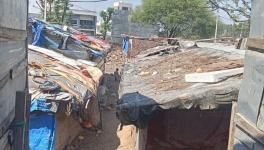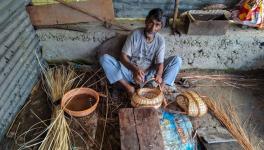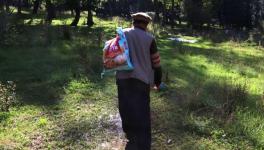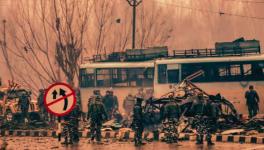Militant Outfit TRF Eyes Flare-up in North Kashmir, Steps Away from Shadow of Other Groups
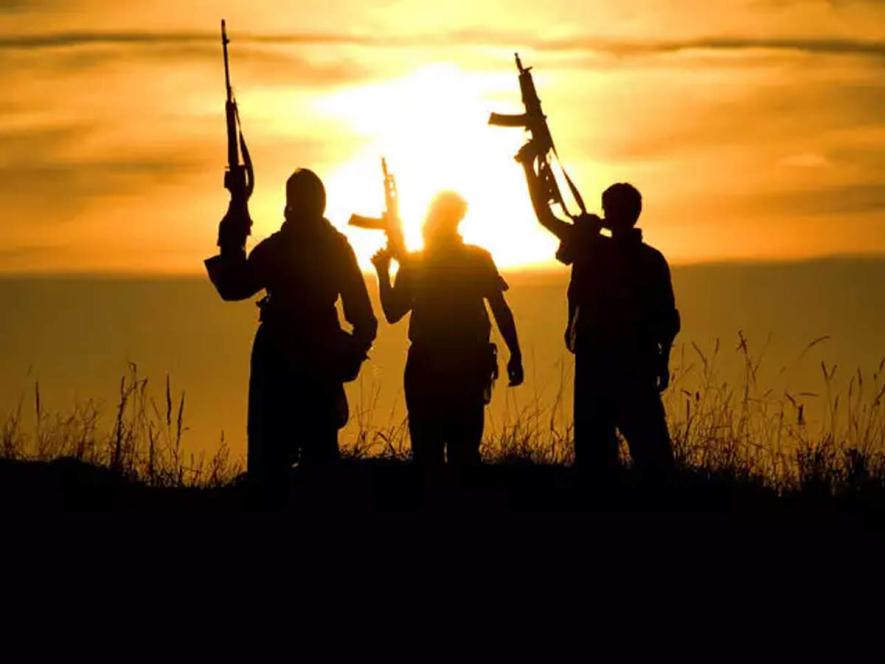
Image Courtesy: The Economic Times
Srinagar: The newly formed outfit The Resistance Front (TRF), which claimed responsibility for a series of militant attacks in Kashmir Valley in the past two months, are eyeing to rake up insurgency in North Kashmir areas that have been mostly dormant for past many years, according to security agencies.
"The outfit is not just eyeing areas of Sopore and Kupwara, but are also making attempts to flare up the Lolab belt as well," a senior security official said.
While Sopore is considered a stronghold of separatist movement, the militancy waned in the district due to militant infighting in 2015 that resulted in over a dozen fratricidal killings. Insurgency in the border areas of Kupwara due to its proximity with the Line of Control (LoC) remained less conspicuous for its utility as a transit route by the insurgents groups.
Security officials believe the new insurgent group TRF is trying to change that.
If unverified blogs and statements are to be believed, many armed groups like TRF, Al-Fateh Tigers, Tehreek-i-Millat Islami (TMI) and JK Fighters Front (JKFF) have emerged in the region in the past few months. Only TRF, however, has carried out multiple attacks in the region and has been engaged actively on ground by the security agencies.
"The new outfit has as many as 12 active militants on the ground and many of them have defected from other outfits like Hizbul Mujahideen. More defections are expected and we may see a swell in the TRF ranks," the official said.
Hizb's top commander Abbas Sheikh is among those believed to have joined TRF. While the switch was earlier attributed to turf-war between TRF and Hizb, the newly formed outfit issued a statement clarifying that there is no feud between the groups. "We are one TRF and Hizb and respect each other," TRF said in a statement issued earlier on April 17.
The security officials are yet to determine the exact number of defections, but believe Lashkar e Taiba's influence is also behind the recruitments in this lesser known group. "LeT is influencing the recruitment in TRF and even in the case of Sheikh who actually wanted to shift from Hizb to LeT was redirected to TRF," another official said, wishing anonymity.
The security agencies believe it is too early to say that groups like TRF can lead to a sudden spike in violence orchestrated by militants. The average number of militants active in Kashmir in the past decade has hardly topped 400 at one time and the militant recruitment which increased remarkably after the killing of Hizbul Mujahideen militant commander Burhan Wani in July 2016 has shown gradual decrease if not for a surge in year 2020 so far. The counter-insurgency operations have continued despite Covid-19 outbreak and over 20 militants have been killed since the lockdown began in March.
Since the outfit announced its formation, as many as eight militants of TRF have been killed in separate encounters, five of them in days-long encounters in Keran sector earlier this month. Five army men including a JCO were also killed in this encounter that ensued along the LoC in Kupwara. A high-quality video surfaced following the incident in which one of the TRF militants was filmed ahead of the attack. On April 18, TRF also claimed responsibility for another attack in Sopore on a paramilitary check-point in which three soldiers were killed.
This week, TRF’s three militants were killed in South Kashmir's Qazigind area of Kulgam district. The TRF issued a statement paying homage to the three slain militants.
Despite claiming most attacks since last month, TRF continues to struggle to emerge as a key outfit beyond the shadow of Hizb and LeT. In one of its first statements, TRF claimed to be an "indigenous armed outfit" which has no affiliation with any other existing armed outfit in the region. It also refuted the claim of security agencies that saw it as an "offshoot" of LeT.
This is not the first time a new outfit has emerged in Kashmir recently. In 2017, Hizb splintered into Ansar Ghazwat ul Hind (AGH) led by former divisional commander Wani's close aide Zakir Bhat aka Musa--both were considered to be the face of "new-age" militancy in Kashmir--pledged its allegiance with global terror outfit Al Qaeda. During the same time, militants who had just revived Tehreek ul Mujahideen (TuM), an outfit from the early 1990s, emerged as Islamic State in the J&K front. Both the groups despite gaining global notoriety remained sidelined to almost non-existent on ground. In 2015, a group of dozen odd militants defected from Hizb to form a more stringent Lashkar e Islam (LeI) but, completely disappeared from the scene within days. Its commander Qayoom Najar who had exfiltrated to Pakistan was killed while infiltrating back from Uri belt in 2017.
This time though, rather than defecting to an extremist faction, the switch is happening to a moderate group but almost all these groups depend on the same village networks and rural kinship. The reason behind the formation of a "new front" which appears "less religious", officials say, is a result of threat from the Financial Action Task Force (FATF) to Pakistan which backs the Kashmir insurgency. Others, however, claim it has more to do with the "re-branding" of Kashmir militancy for international appeal. "Anything that looks even remotely extremist will automatically get discredited especially when even competing groups bear no secular credentials. It's like how one pictures the Free Syrian Army and the Islamic State (IS)," the official said.
Since the insurgency broke out in the region in 1989, the transition has happened from secular outfits like Jammu and Kashmir Liberation Front (JKLF) to religious groups to overtly religious groups and then to extremist outfits for years. With TRF, that cycle of transition has stopped. While JKLF after being sidelined in turf-war by more religious outfits like Hizb called for a unilateral ceasefire in 1994 and abandoned militancy while losing most of its cadre to fratricide, TRF is mostly an outfit formed by "defection" of militants from the existing groups, a senior official said.
Also read: Kashmir: Father-daughter Duo Arrested for ‘Sheltering’ Fidayeens
Get the latest reports & analysis with people's perspective on Protests, movements & deep analytical videos, discussions of the current affairs in your Telegram app. Subscribe to NewsClick's Telegram channel & get Real-Time updates on stories, as they get published on our website.









